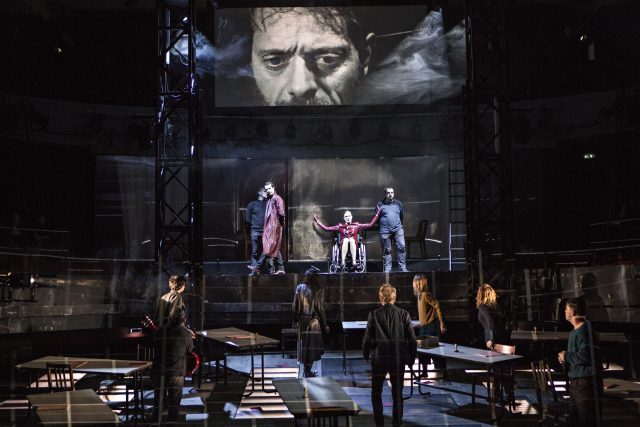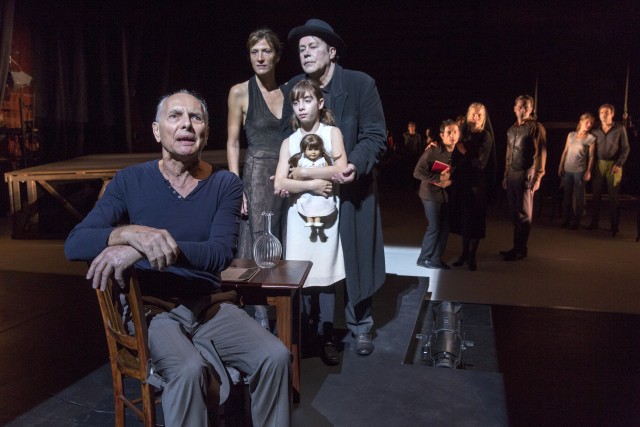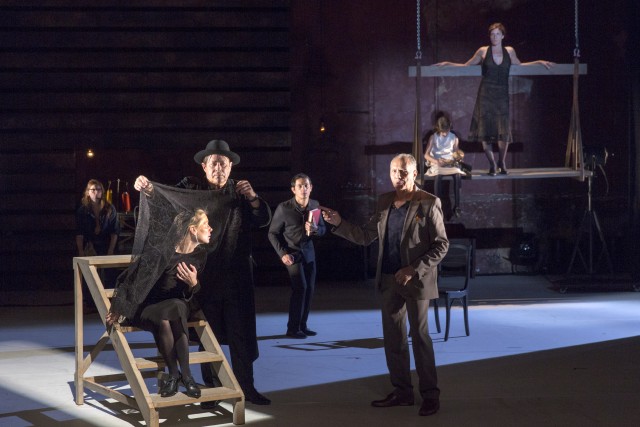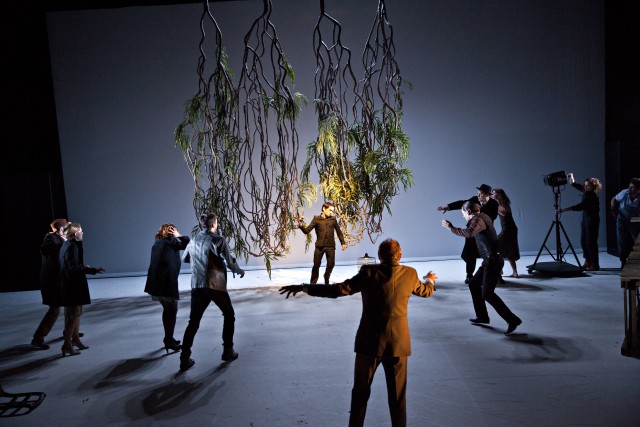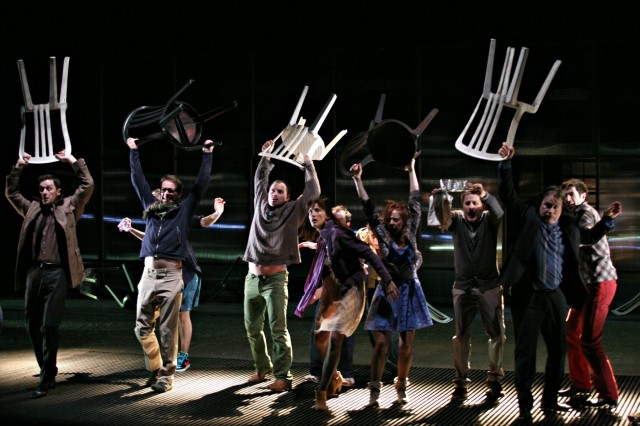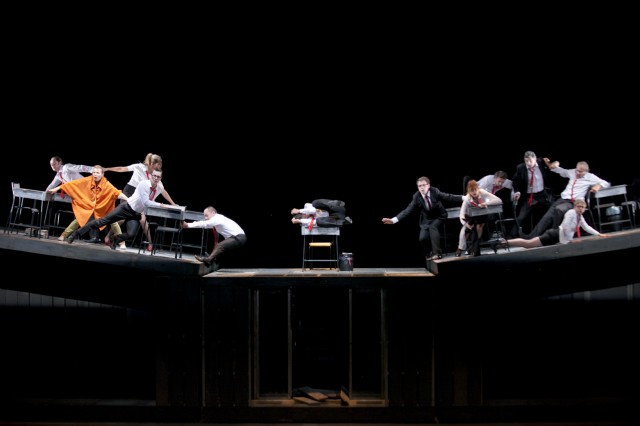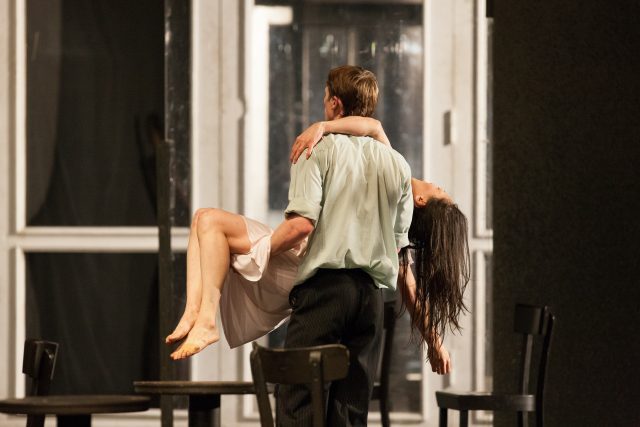
Tanztheater Wuppertal/Pina Bausch’s Café Müller returns to BAM for Next Wave Festival (photo by Bo Lahola)
BAM Harvey Theater, 651 Fulton St.
BAM Howard Gilman Opera House, 30 Lafayette Ave.
BAM Fisher, 321 Ashland Pl.
September 14 – December 16
718-636-4100
www.bam.org
As usual, we are considering moving in to the Brooklyn Academy of Music for three months after the announcement of the lineup for the thirty-fifth BAM Next Wave Festival, running September 14 through December 16 at the Harvey, the Howard Gilman Opera House, and the Fisher. “This year’s Next Wave showcases artists from Switzerland to Senegal in creative dialogue with historic events, personal histories, and the present moment,” longtime BAM executive producer Joe Melillo said in a statement. The roster includes old favorites and up-and-comers from around the world, with several surprises. Dance enthusiasts will be particularly impressed with the schedule, which begins September 14-24 with a superb double bill of Tanztheater Wuppertal/Pina Bausch’s Café Müller and The Rite of Spring, which were part of the first Bausch program at BAM back in June 1984. For The Principles of Uncertainty (September 27-30), Maira Kalman teams up with John Heginbotham, Dance Heginbotham, and the Knights to bring her online graphic diary to life. New York Live Arts artistic director and cofounder Bill T. Jones returns to BAM with the Bill T. Jones/Arnie Zane Company and composer Nick Hallett for A Letter to My Nephew (October 3-7), about his nephew, Lance T. Briggs, who battled illness and addiction. Senegalese artist Germaine Acogny takes center stage for the emotional solo piece Mon élue noire (My Black Chosen One): Sacre #2 (October 4-7), choreographed specifically for her by Olivier Dubois of Ballet du Nord, set to music by Stravinsky. Also on the movement bill are Joshua Beamish/MOVETHECOMPANY’s Saudade, Cynthia Oliver’s Virago-Man Dem, ODC/Dance, Brenda Way, and KT Nelson’s boulders and bones, David Dorfman Dance’s Aroundtown, Hofesh Shechter Company’s Grand Finale, Xavier Cha’s Buffer, Big Dance Theater’s 17c, and Tesseract, a multimedia collaboration between Charles Atlas, Rashaun Mitchell, and Silas Riener.
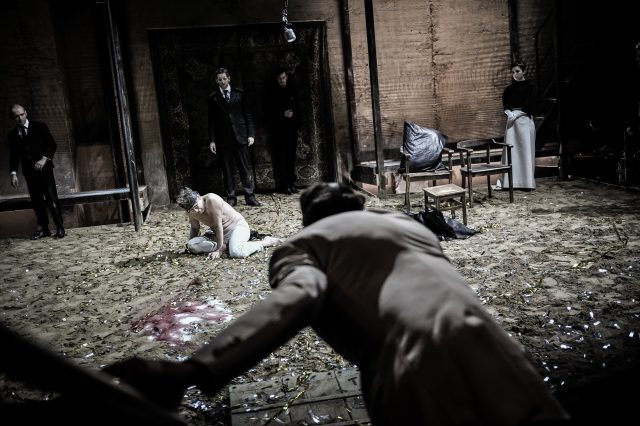
Schaubühne Berlin presents the U.S. premiere of its unique take on Richard III at BAM Next Wave Festival (photo by Arno Declair)
The festival also boasts impressive theater productions, kicking off October 11-14 with Schaubühne Berlin’s tantalizing version of Shakespeare’s Richard III, translated and adapted by Marius von Mayenburg, directed by Thomas Ostermeier, and starring Lars Eidinger. Théâtre de la Ville, Paris is back November 2-4 with Albert Camus’s State of Siege, directed by Emmanuel Demarcy-Mota. Tony-winning Belgian director Ivo van Hove takes on Ayn Rand in Toneelgroep Amsterdam’s four-hour The Fountainhead November 28 to December 2. Rachel Dickstein and Ripe Time bring Naomi Iizuka’s adaptation of Haruki Murakami’s Sleep to the Fisher November 20 to December 2. Fresh off her Broadway stint in Marvin’s Room, Lili Taylor stars in Farmhouse/Whorehouse: An Artist Lecture by Suzanne Bocanegra, directed by Lee Sunday Evans (December 12-16). Geoff Sobelle, who went solo at BAM for The Object Lesson, is joined by an ensemble of designers and dancers for Home (December 6-10). And be on the lookout for Manfred Karge, Alexandra Wood, and Wales Millennium Centre’s Man to Man, Thaddeus Phillips and Steven Dufala’s A Billion Nights on Earth, the Cameri Theatre of Tel-Aviv’s adaptation of Etgar Keret’s Suddenly, directed by Zvi Sahar and PuppetCinema, Manual Cinema’s Mementos Mori, Marc Bamuthi Joseph/The Living Word Project’s /peh-LO-tah/, and James Thierrée and Compagnie du Hanneton’s La grenouille avait raison (The Toad Knew).
Music aficionados have plenty to choose from, with Olivier Py Sings Les Premiere Adieux de Miss Knife, Kronos Quartet, Rinde Eckert, and Vân-Ánh Võ’s My Lai, Bang on a Can All-Stars, Michael Gordon, David Lang, Julia Wolfe, and Michael Counts’s Road Trip, Gabriel Kahane’s Book of Travelers, Rithy Panh, Him Sophy, Trent Walker, Jonathan Berger, and Harriet Scott’s Bangsokol: A Requiem for Cambodia, Wordless Music Orchestra and Chorus’s two-part John Cale: The Velvet Underground & Nico, and the New York premiere of American Repertory Theater’s Crossing, an opera inspired by Walt Whitman’s “Crossing Brooklyn Ferry,” composed, written, and conducted by Matthew Aucoin and directed by Diane Paulus. The season is supplemented with several postperformance talks and master classes.
